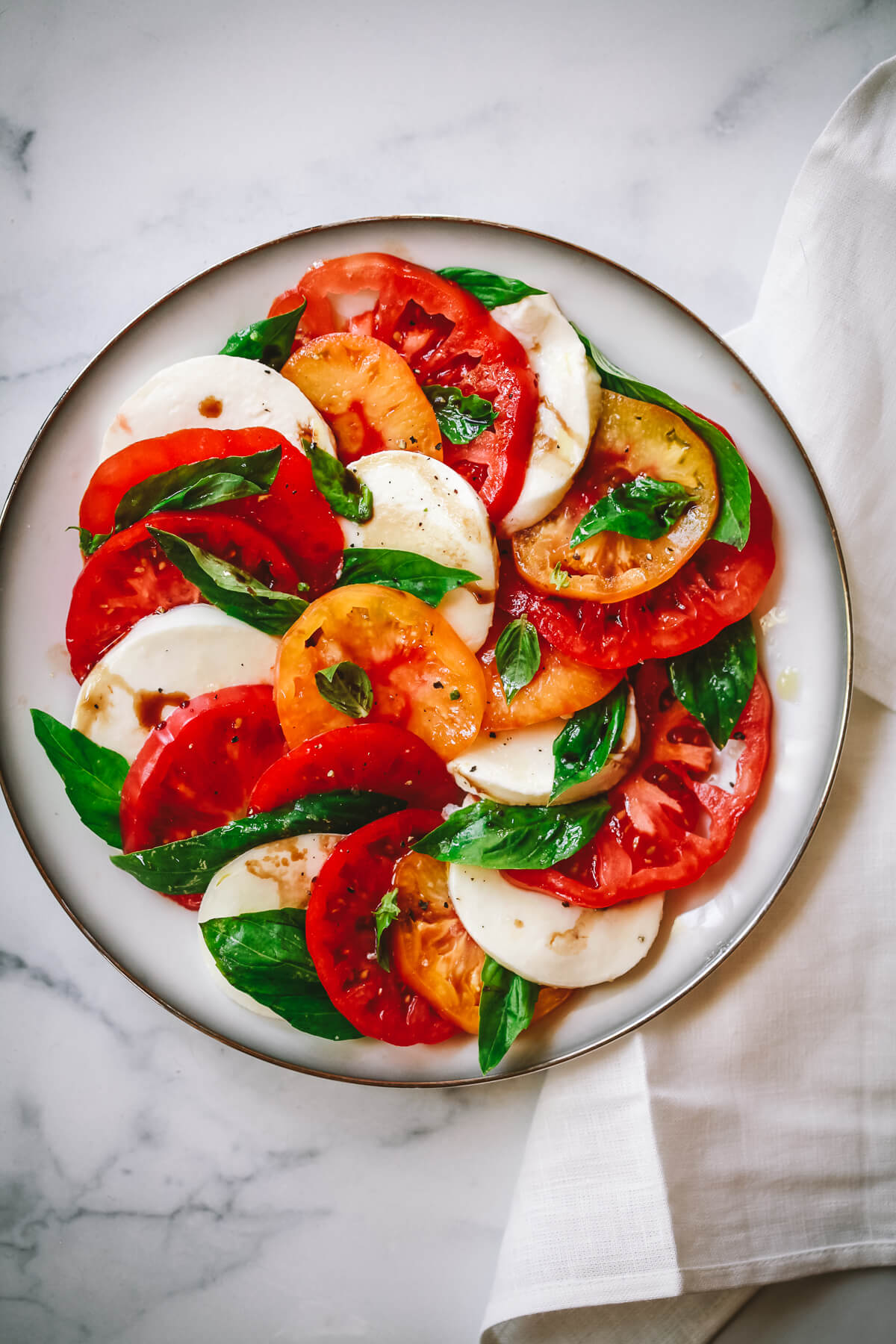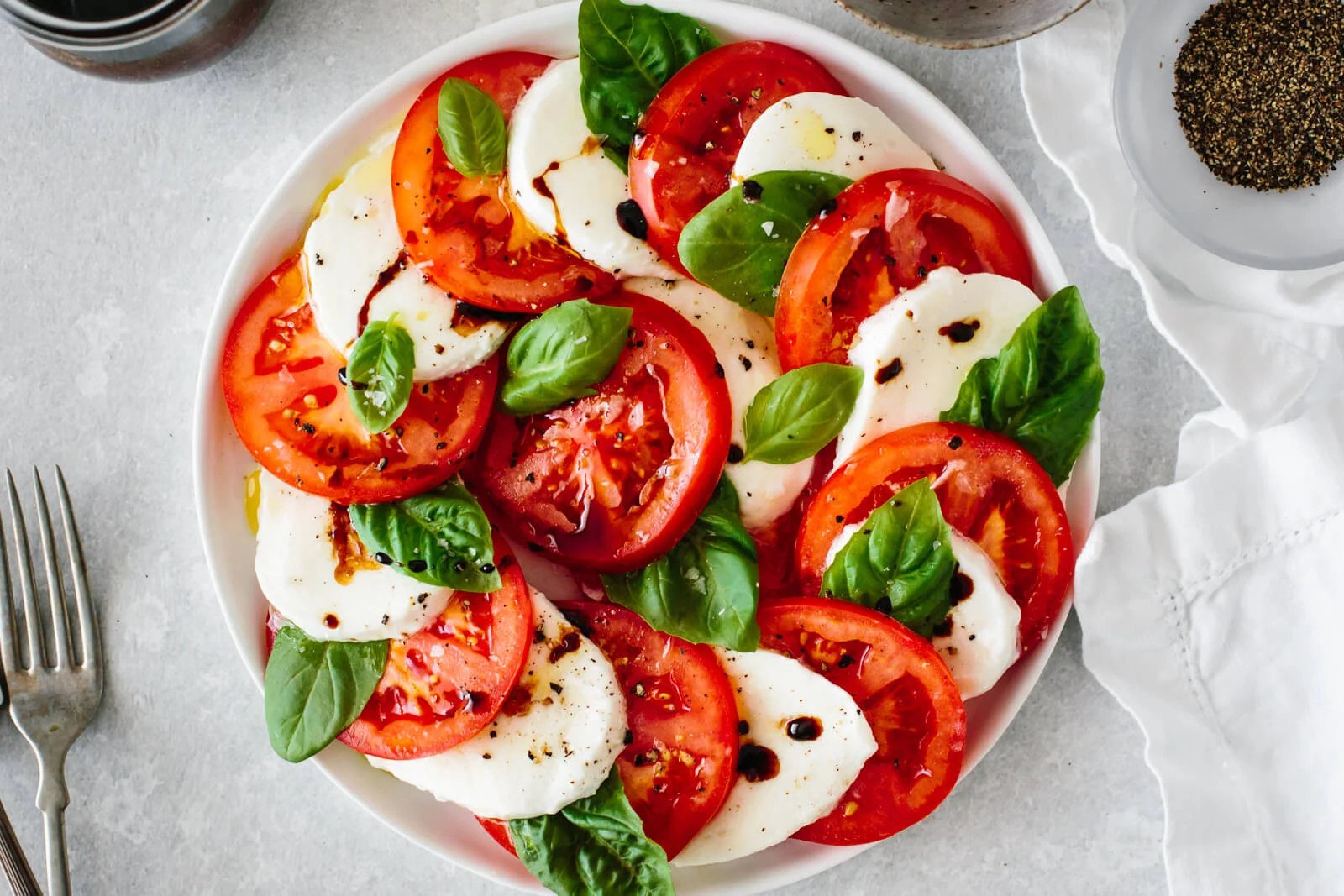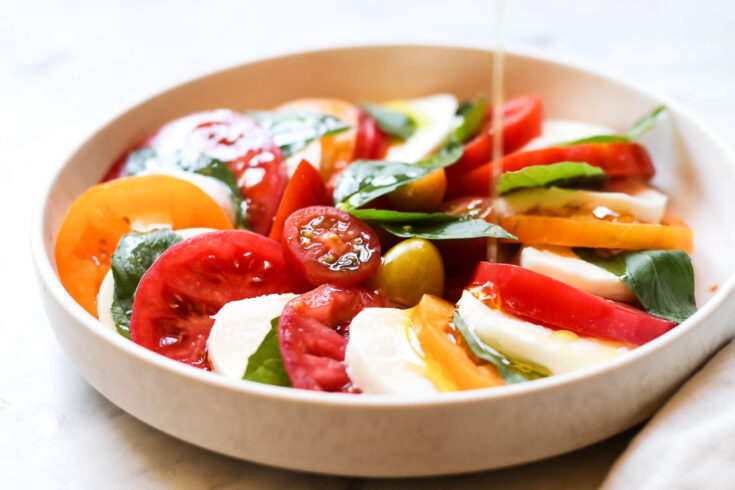Introduction To Italian Dishes Pronunciation

When it comes to the world of Italian cuisine, pronunciation plays a crucial role in understanding and appreciating the authenticity of the dishes. Proper pronunciation not only helps us communicate effectively but also allows us to immerse ourselves in the cultural experience of Italian dining. mastering the correct pronunciation of Italian dishes like Caprese Salad helps to ensure that we are conveying the proper respect for the culinary traditions. In this article, we will explore the significance of pronouncing Caprese Salad accurately and provide a guide to correctly pronounce popular Italian dishes. Let’s dive in and elevate our dining experience with precise Italian pronunciation.
Overview Of Italian Cuisine And The Importance Of Pronouncing Dishes Correctly
Italian cuisine is renowned for its rich flavors and diverse range of dishes. From pasta and pizza to gelato and espresso, Italian food holds a special place in global culinary culture. However, to truly appreciate this cuisine, it is crucial to pronounce the dishes correctly. Proper pronunciation not only shows respect for the Italian language and culture but also helps to convey the authentic essence of the dish. Whether you are ordering at a restaurant or discussing Italian cuisine with others, mastering the pronunciation of Italian dishes adds to the overall dining experience.
Understanding The Significance Of Pronouncing Caprese Salad Accurately
Pronouncing Caprese Salad accurately holds significant importance in the culinary world. The correct pronunciation not only showcases your knowledge and appreciation for Italian cuisine but also helps to preserve its cultural authenticity. By pronouncing Caprese Salad accurately, you are able to convey the dish’s true essence and respect the traditions associated with it. Additionally, mastering the pronunciation allows for effective communication with Italian chefs and enhances the overall dining experience, ensuring that you can fully immerse yourself in the flavors and culture of this classic Italian dish.
Caprese Salad: An Italian Classic

Caprese Salad is an Italian classic that has become synonymous with fresh, vibrant flavors. This simple yet elegant dish showcases the essence of Italian cuisine. It consists of ripe tomatoes, creamy mozzarella cheese, fragrant basil leaves, and a drizzle of extra virgin olive oil. The combination of these high-quality ingredients creates a harmonious flavor profile that is both light and satisfying. Caprese Salad is not only delicious, but it also pays homage to Italy’s rich culinary traditions. It is a timeless dish that continues to captivate taste buds around the world.
Ingredients And Traditional Preparation Of Caprese Salad
Caprese Salad is made with a simple yet flavorful combination of ingredients. It typically includes ripe tomatoes, fresh mozzarella cheese, fragrant basil leaves, and extra virgin olive oil. The tomatoes are sliced and layered with the mozzarella, and then garnished with basil leaves. The salad is then drizzled with olive oil and seasoned with salt and pepper. This traditional preparation highlights the freshness and quality of the ingredients. The vibrant colors and flavors of the tomatoes, creamy cheese, and aromatic basil create a harmonious and refreshing dish that is loved by many.
The Cultural Significance Of Caprese Salad In Italian Cuisine
Caprese Salad holds a special place in Italian cuisine as it embodies the essence of simplicity and freshness. The vibrant colors of the tomatoes, mozzarella cheese, and basil leaves are reminiscent of the Italian flag, symbolizing national pride. This dish is a celebration of seasonal ingredients, reflecting the Italian culinary philosophy of using high-quality, locally sourced produce. Caprese Salad is not only a popular appetizer or side dish but also a representation of the Mediterranean diet, which emphasizes the consumption of fresh, wholesome ingredients. It showcases the Italian commitment to preserving and honoring traditional recipes that have been passed down through generations.
How To Pronounce Caprese Salad Correctly

When it comes to pronouncing Caprese Salad correctly, it is important to focus on each component of the dish. Here is a breakdown of the correct pronunciation:
- Caprese: In English, it is pronounced as “kah-preh-zay.” Remember to emphasize the “pre” sound.
- Salad: Pronounced as “sah-lad,” with a short “a” sound in both syllables.
To perfect your pronunciation, practice saying “kah-preh-zay sah-lad” out loud. By mastering the pronunciation, you can confidently order this classic Italian dish and impress those around you with your knowledge of proper pronunciation.
Breakdown Of Syllables In Caprese And Guidance On Pronunciation
When pronouncing Caprese correctly, it is important to understand the breakdown of syllables. The word “Caprese” is divided into three syllables: “ka-pray-zay.” To pronounce it accurately, focus on each syllable individually. The first syllable “ka” is pronounced like the “k” in the word “kitten.” The second syllable “pray” sounds like the word “pray.” Lastly, the third syllable “zay” is similar to the word “zay” but with a “z” sound instead of an “s” sound. By mastering this breakdown of syllables, one can confidently pronounce Caprese Salad.
Tips For Mastering The Pronunciation Of Caprese Salad With Confidence
- Break it down: Separate the word “Caprese” into syllables – “ka,” “pre,” and “zay.” Practice pronouncing each syllable individually before putting them together.
- Listen and imitate: Watch videos or listen to native speakers pronouncing “Caprese Salad.” Pay attention to their pronunciation and try to imitate their accent and intonation.
- Practice with a language partner: Find a language partner or a native speaker who can help you practice pronouncing “Caprese.” Ask for feedback and guidance on improving your pronunciation.
- Use pronunciation apps: There are several smartphone apps available that provide pronunciation exercises and guidance. Utilize these resources to practice and refine your pronunciation.
- Record yourself: Use a voice recording app to record yourself pronouncing “Caprese.” Listen to the recording and compare it to the pronunciation of native speakers. Identify any areas where you need improvement and practice accordingly.
- Repeat, repeat, repeat: Practice pronouncing “Caprese” repeatedly until you feel confident. The more you practice, the more natural and accurate your pronunciation will become.
Remember, mastering the pronunciation of “Caprese Salad” takes time and practice. With dedication and consistency, you will be able to confidently pronounce this Italian dish.
Common Misconceptions About Italian Dish Pronunciations

Many people have misconceptions about the pronunciations of Italian dishes. One common mistake is assuming that all Italian words should be pronounced with a heavy accent. In reality, Italian pronunciation is often softer and more melodic. Additionally, some people may mistakenly believe that using exaggerated hand gestures while pronouncing Italian dishes is necessary. However, simply focusing on proper pronunciation is enough to convey your understanding of the cuisine. It is important to dispel these misconceptions and focus on accurately pronouncing Italian dishes to fully appreciate their cultural significance and culinary excellence.
Exploring Common Mistakes Made When Pronouncing Italian Cuisine
When it comes to pronouncing Italian cuisine, there are a number of common mistakes that people often make. One of the most prevalent errors is assuming that all Italian words should be pronounced with a heavy accent. In reality, Italian pronunciation is often softer and more melodic. Another misconception is the belief that using exaggerated hand gestures while pronouncing Italian dishes is necessary. However, simply focusing on proper pronunciation is enough to convey your understanding of the cuisine. By dispelling these misconceptions and embracing accurate pronunciations, you can fully appreciate the cultural significance and culinary excellence of Italian dishes.
Addressing Misconceptions And Providing Correct Pronunciations
Another common misconception when pronouncing Italian dishes is the belief that using exaggerated hand gestures is necessary. While it’s true that Italians are known for their expressive gestures, proper pronunciation alone is enough to convey your understanding of the cuisine. It’s important to focus on mastering the correct pronunciation of the words, rather than relying on hand gestures. By dispelling these misconceptions and embracing accurate pronunciations, you can fully appreciate the cultural significance and culinary excellence of Italian dishes. Here are some correct pronunciations of popular Italian dishes:
- Bruschetta: broo-SKEH-tah
- Prosciutto: pro-SHOO-toh
- Tiramisu: tee-rah-mee-SOO
With these correct pronunciations, you can confidently order and discuss Italian dishes, immersing yourself in the rich culinary traditions of Italy.
Italian Dish Pronunciation Guide

The Italian Dish Pronunciation Guide provides a comprehensive resource for mastering the correct pronunciation of popular Italian dishes. By understanding how to pronounce these dishes accurately, individuals can enhance their dining experiences and fully appreciate the cultural significance of Italian cuisine. The guide includes correct pronunciations for dishes such as Bruschetta (broo-SKEH-tah) and Prosciutto (pro-SHOO-toh), enabling individuals to confidently order and discuss these dishes with authenticity. By honing their pronunciation skills, individuals can immerse themselves in the rich culinary traditions of Italy and embrace a more authentic dining experience.
Correct Pronunciation Of Popular Italian Dishes Including Bruschetta And Prosciutto
When it comes to popular Italian dishes, knowing how to pronounce them correctly can elevate your dining experience. Take Bruschetta, for example, pronounced as “broo-SKEH-tah.” This appetizer features toasted bread topped with fresh tomatoes, garlic, and basil. Another dish to master is Prosciutto, pronounced as “pro-SHOO-toh.” This thinly sliced, dry-cured ham is often served as an antipasto or used to enhance the flavors of various dishes. By pronouncing these dishes accurately, you can confidently order and discuss them, immersing yourself in the rich culinary traditions of Italy.
Tips For Improving Your Pronunciation Skills For A More Authentic Dining Experience
- Listen to native speakers: One of the best ways to improve your pronunciation is to listen to native speakers. Whether it’s through podcasts, videos, or conversations with Italian friends, immersing yourself in the language will help you pick up on the nuances of pronunciation.
- Practice repeating phrases: Repeat after native speakers or practice phrases commonly used in Italian cuisine. This will help you become more comfortable with pronouncing specific words and phrases correctly.
- Use pronunciation resources: There are numerous online resources available that provide audio recordings of words and phrases in Italian. Utilize these resources to hear the correct pronunciation and practice along.
- Pay attention to vowel sounds: Italian is known for its distinct vowel sounds. Pay close attention to the pronunciation of vowels like “a,” “e,” “i,” “o,” and “u,” and practice reproducing them accurately.
- Record yourself: Recording yourself speaking in Italian and comparing it to native speakers can help you identify areas where you need improvement. Take note of any discrepancies and work on refining your pronunciation.
- Seek feedback: Ask native speakers or language instructors to provide feedback on your pronunciation. They can offer valuable guidance and correct any errors you may be making.
- Practice in context: Use Italian phrases and words in real-life situations, such as ordering food at a restaurant or having conversations with Italian speakers. Practicing in context will not only improve your pronunciation but also enhance your overall language skills.
By following these tips and consistently practicing, you can improve your pronunciation skills and have a more authentic dining experience in Italian cuisine.
Conclusion

In conclusion, the correct pronunciation of Italian dishes, such as Caprese Salad, is crucial for a more authentic dining experience. Proper pronunciation not only allows you to navigate menus confidently but also enhances your overall language skills. By practicing and familiarizing yourself with the pronunciation of specific words and phrases, you can immerse yourself in the rich cultural heritage of Italian cuisine. Embracing accurate pronunciation practices contributes to a more enjoyable and culturally authentic dining experience. So, next time you order Caprese Salad, remember to pronounce it correctly and savor every bite.
Summary Of The Importance Of Proper Pronunciation In Italian Cuisine
Proper pronunciation plays a vital role in Italian cuisine as it reflects respect for the culture and language. When ordering dishes like Caprese Salad, accurate pronunciation ensures effective communication with chefs and fellow food enthusiasts. It also enhances the overall dining experience by preserving the authenticity of the dish. Acquiring proficiency in pronouncing Italian dishes opens doors to a diverse culinary world, allowing individuals to appreciate and explore the nuances of Italian cooking techniques and ingredients. Embracing correct pronunciation practices contributes to a more authentic and enjoyable dining experience.
Embracing Cultural Authenticity Through Accurate Pronunciation Practices.
Embracing cultural authenticity through accurate pronunciation practices is crucial when it comes to Italian cuisine. Properly pronouncing Italian dishes like Caprese Salad shows respect for the culture, language, and heritage behind these culinary delights. When we take the time to learn and pronounce Italian cuisine correctly, we honor the traditions and craftsmanship that have been passed down through generations. By mastering the pronunciation of these dishes, we can fully immerse ourselves in the Italian dining experience and appreciate the nuances of the ingredients and flavors used. Accurate pronunciation allows us to connect more deeply with the culinary traditions of Italy and embrace the cultural authenticity they offer.
FAQ About Pronunciation Of Caprese Salad: Correctly Saying Italian Dishes
Q: How is “Caprese Salad” pronounced?
A: Caprese Salad is pronounced as “kuh-PREY-zey sal-uhd.”
Q: Are there any particular rules to follow when pronouncing Italian dishes?
A: Yes, Italian pronunciation often follows simple rules like emphasizing vowels, pronouncing double consonants separately, and placing stress on the correct syllable.
Q: What is the correct pronunciation of “bruschetta”?
A: Bruschetta is pronounced as “broo-SKEH-tuh.”
Q: How do you correctly say “gnocchi”?
A: Gnocchi is pronounced as “NYOH-kee.”
Q: What is the right way to pronounce “prosciutto”?
A: Prosciutto is pronounced as “pro-SHOO-toh.”
Q: How should one pronounce “ricotta”?
A: Ricotta is pronounced as “rih-COH-tuh.”
Q: Is there a specific way to say “affogato”?
A: Affogato is pronounced as “ah-foh-GAH-toh.”
Q: What is the correct pronunciation of “cannoli”?
A: Cannoli is pronounced as “kuh-NOH-lee.”

Madame Thai Cuisine is not just a restaurant; it’s a culinary journey through Thailand’s vibrant and diverse flavors. Our story began with a passion for sharing the authentic tastes of Thailand with the world. Situated in the heart of [location], Madame Thai Cuisine has been a beacon of Thai culinary excellence since [year of establishment]. Our commitment to using only the finest and freshest ingredients, combined with traditional cooking techniques, has earned us a reputation as a go-to destination for exquisite Thai dining.